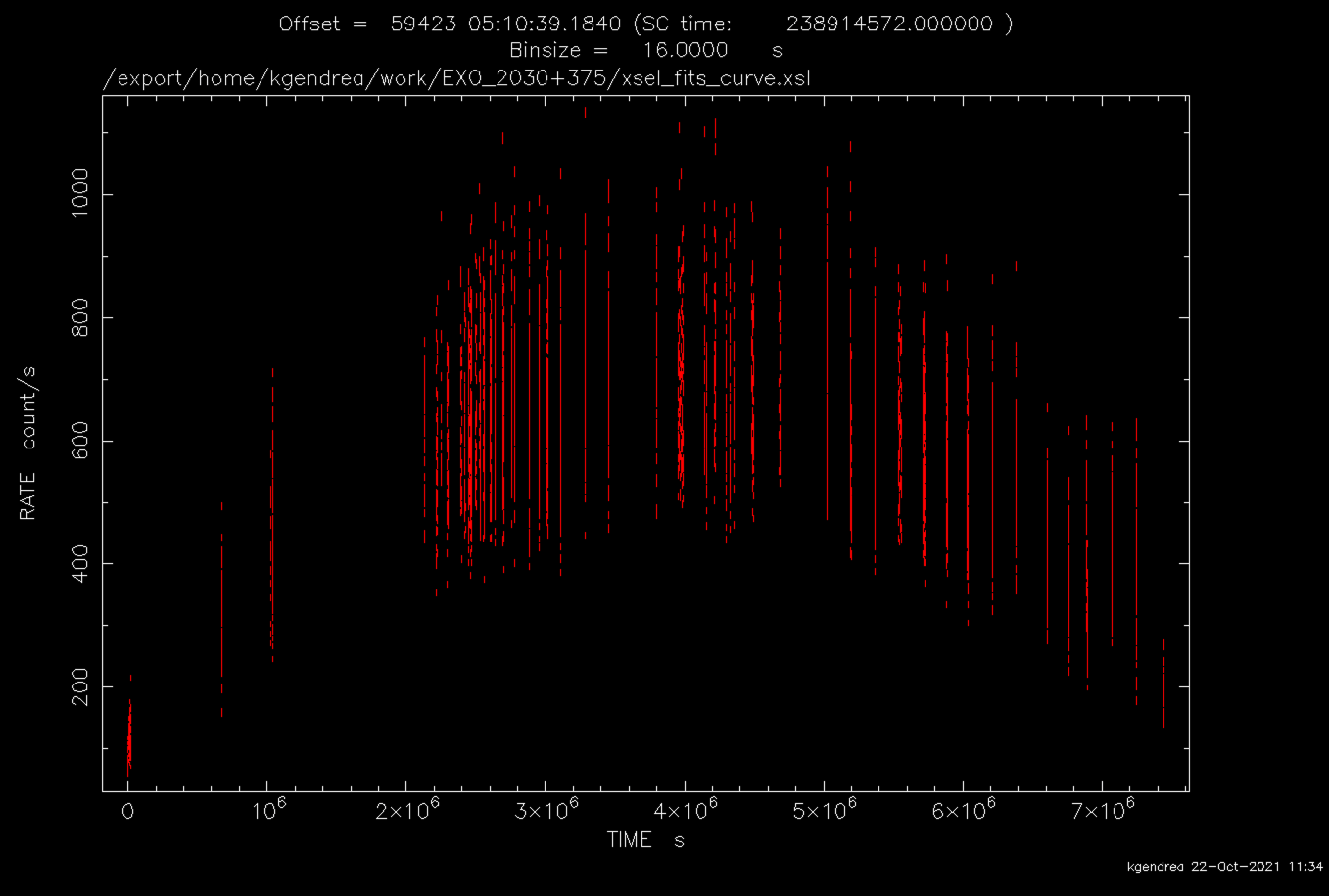NICER / ISS Science Nugget
for October 28, 2021
NICER Monitors an X-ray Pulsar Giant Outburst in Decline
As described in our
Sept 30, 2021 report, the accreting neutron-star system EXO 2030+375 has been undergoing a "giant" outburst since late July, its first since 2006 and historically its third-brightest. The sustained transfer of gas from the massive companion star onto the neutron star, lasting several months, spins up the pulsar to ever-increasing rotation rates (the spin period is currently 41.22 seconds). X-ray emission from both the disk of hot gas and the flow onto the neutron star surface brightened initially and has now begun to dim (see Figure). The X-ray spectrum and the shape of the pulsed modulation are also evolving: changes observed during brightening are now being seen in reverse as the source dims. The latest results for EXO 2030 were reported by Thalhammer et al. in Astronomer's Telegram #
15006.

Figure: The long-term (July 28 through Oct 22) evolution of the X-ray brightness of EXO 2030+375, as measured by NICER's X-ray Timing Instrument. Each exposure lasts 1000-2000 seconds, with individual points representing 16-sec data segments. The 41-second pulsations are responsible for the large scatter of points in a given day's observations.
<< Previous
Main Index